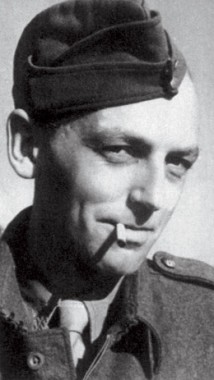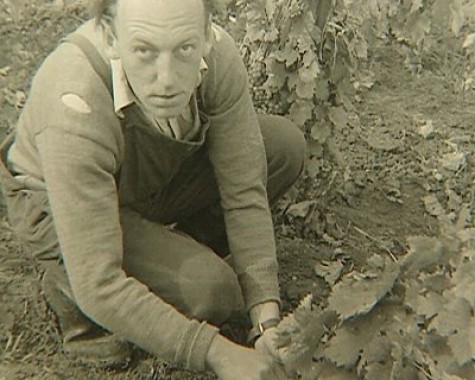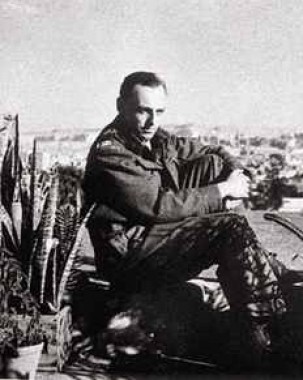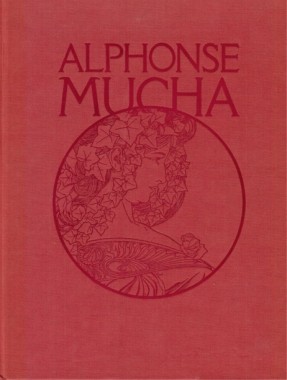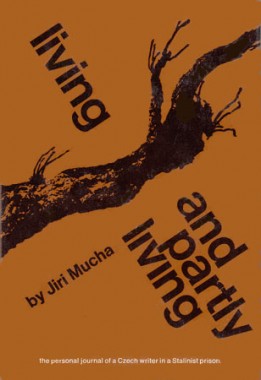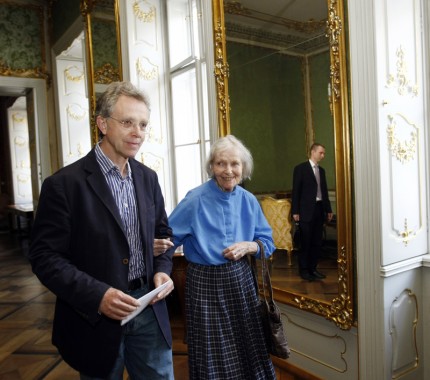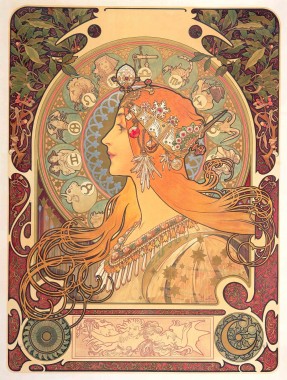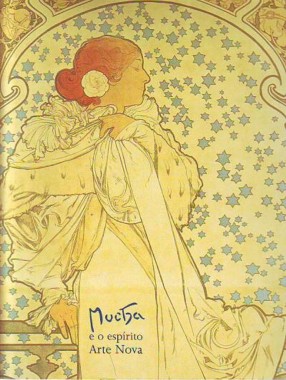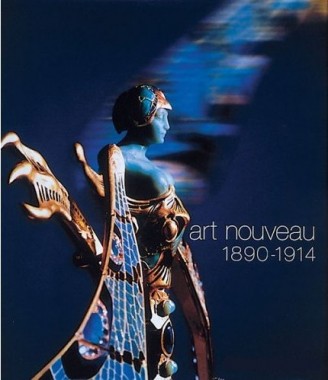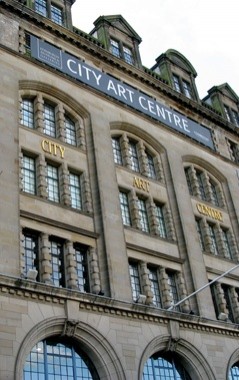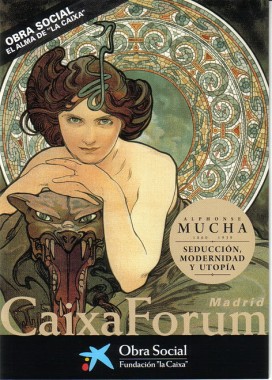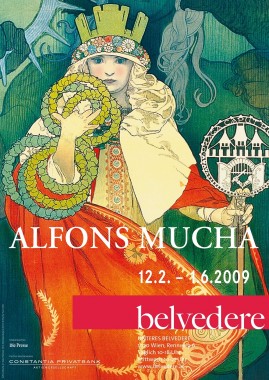Loading...
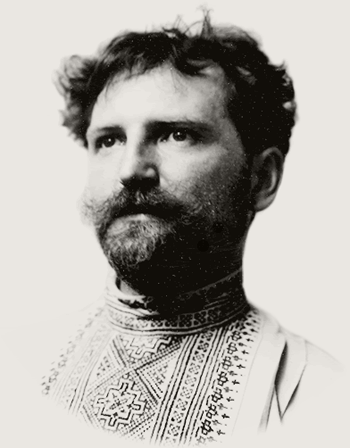
Alphonse Mucha Timeline
Czech painter Alphonse Maria Mucha leapt to fame in Paris in 1895 when his poster Gismonda (1894) for the superstar Sarah Bernhardt heralded the birth of the distinctive ‘Style Mucha’ and established him as the pre-eminent exponent of French Art Nouveau.
This living timeline positions Mucha’s life within the context of significant contemporary historical and artistic events and shows how his artistic legacy has been protected and promoted by his family, leading to the establishment of the Foundation in 1992 and its ongoing mission to share and celebrate his work and life.
Drag anywhere to explore
Click/tap on an image for more details
-
1860 — 1879 Beginnings
Born at the height of the Czech National Revival, Mucha grew up to be a passionate believer in an independent Czech nation.
1860
-
Life
Mucha is born in Ivančice
Alphonse Maria Mucha is born on the 24 July in Ivančice, a South Moravian town under Austrian administration.
His father, Andreas Mucha, is a court usher, and his mother, Amalie (née Mala) a governess in Vienna.
Mucha has two half-sisters from his father’s previous marriage, and is soon joined by two younger sisters, Anna and Angela.
-

Abraham Lincoln is elected 16th President of the United States of America

1861
-
The Arts and Crafts Movement is born in Britain
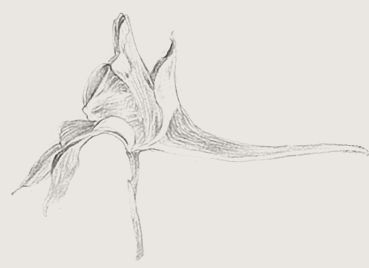
1863
-
The Czech artists’ association, Umělecká Beseda, is founded in Prague
-
The first Salon des Refusés (exhibition of rejected artists) is held in Paris

1866
-
LifeClick here to find out more about Mucha witnesses the defeat of the Austrian Empire by the Prussians

Mucha witnesses the defeat of the Austrian Empire by the Prussians
On 3 July, the Prussian army defeats the Austrian army at the Battle of Königgrätz (present day Sadová in the Hradec Králové Region). This battle, conducted around 160km from Ivančice, proves to be the decisive battle of the Austro-Prussian War. It involves the largest number of soldiers in Europe to that day and ends with nearly 9,000 Prussians and over 44,000 Austrians killed, wounded or missing.
While under German occupation, a cholera epidemic breaks out in Ivančice which only adds to the large numbers of casualties.
Young Mucha looks on in horror as emaciated bodies are thrown into common graves outside the town.
1868
-
work
Crucifixion
This is one of Mucha's earliest known compositions made when he was about 8 years old.
It shows the influence of the Catholic Church even in his earliest days.
1870
-
The Franco-Prussian war breaks out and Paris falls under siege

1871
-
The Commune takes control of Paris
-
The Czechs are refused an alliance with the Austrian and Hungarian monarchies
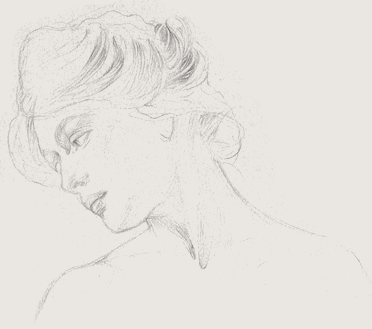
1872
-
Life
Mucha attends the Gymnázium Slovanské in Brno
Aged 12, Mucha is given a choral scholarship from the Petrov church to board at the Gymnázium Slovanské secondary school in Brno.
Here he meets the deputy choirmaster and future composer Leoš Janáček (1854-1928).
1874
-
The first Impressionist exhibition is held in Paris
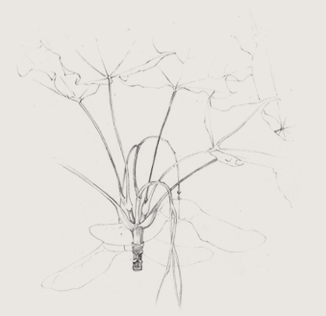
1877
-
Life
Mucha resolves to become an artist
Mucha is expelled from school due to his poor academic performance.
On his way back to Ivančice, where his father has secured him a job as a clerk at the town courtroom, Mucha visits a friend in Ústí nad Orlicí.
In a local church, possibly St Wenceslas in Letohrad, he comes across a fresco in the Czech Baroque tradition painted by local artist Jan Umlauf (1825-1916). He is so taken by the work, and the realisation that artists of his own time are able to earn a living through painting, that he resolves to become a professional artist.
1878
-
Life
Mucha begins decorative and design work
Following an unsuccessful application to Prague Academy of Art, Mucha continues his administrative job while becoming increasingly involved in decorative design work for local magazines and theatres.
-
Muybridge demonstrates the possibilities of photography
-
-
1880 — 1894 Artistic training
After working in Vienna as a theatre set painter, Mucha studied art in Munich and then Paris where he gained recognition as an illustrator.
1880
-
Life
Mucha is employed as a scenery painter in Vienna
At the age of 19, Mucha makes a successful application to become an apprentice scenery painter at Vienna’s Kautsky-Brioschi-Burghardt theatre design company.
While in Vienna, he enrolls in evening art classes and visits a number of galleries and contemporary art exhibitions. He becomes particularly interested in the work of the Austrian artist Hans Makart (1840-1884).
1881
-
Life
Mucha loses his job and is forced to return to Moravia
A major fire destroys Vienna’s Ring Theatre killing nearly 400 people. As one of Kautsky-Brioschi-Burghardt’s most important clients, this results in a serious financial loss for the company, and several members of staff, including Mucha, are dismissed.
1882
-
Life
Mucha is given his first commission
Mucha leaves Vienna for Mikulov, a small town in South Moravia. Here he begins painting portraits of local society figures.
While in Mikulov, his work comes to the attention of local landowner Count Karl Khuen-Belasi who commissions him to paint a decorative scheme in his main residence, Emmahof Castle. He is subsequently commissioned to complete a second scheme for the Count’s brother Egon at Gandegg Castle in Tyrol. These are Mucha’s first major commissions and lay foundations for his later large-scale projects such as the Bosnia-Herzegovina Pavilion for the 1900 Paris Exhibition.
With the Count’s financial support, Mucha is able to receive formal art training in Munich and Paris. He accompanies Mucha to Italy where they visit Venice, Florence, Bologna and Milan.
Mucha wrote later that the Count was a 'great moral authority' for him.
-
work
Design for the cover of the magazine 'Fantaz'
After leaving Ivančice, Mucha stays in close touch with his family and friends and continues to produce a number of illustrations for local magazines.
Fantaz is an illustrated satirical magazine run by Mucha’s close friend and later brother-in-law, Filip Kubr (1858-1913).
-

The Czech language is given a semi-official status in Moravia and Bohemia
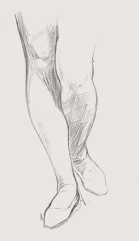
1884
-
The first Salon des Indépendants is held in Paris
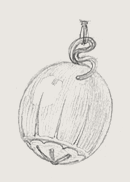
1885
-
Life
Mucha joins the Munich Academy of Arts
With financial support from Count Khuen-Belasi, Mucha joins Munich’s Akademie der Bildenden Künste (Academy of Art) where he remains for two years. Munich is an important centre of painting and visual art at the time, and the Academy is second in international importance only to the academies of Paris and Dusseldorf.
At the Academy he meets fellow Czech students Karel Mašek and Luděk Marold, and the Russian painters David Widhopff and Leonid Pasternak.
While in Munich, Mucha becomes an active member, and subsequently chairman, of the newly-formed Škréta spolek (the Škréta Group), a community of Central and Eastern European art students living in Munich.
-
work
Design for the heading of the cover of the magazine 'Krokodil'
Mucha is a principal contributor to Krokodil and various other periodicals published by Filip Kubr, who marries his sister Anna in 1885.
In Munich, Mucha receives regular requests from his brother-in-law aking to contribute illustrations to his periodicals. As his fame increases, so do such demands.
Mucha’s designs for Kubr’s magazines already demonstrate an innovative approach to calligraphy and lettering.
-
work
Study of a Male Nude
This painting is probably a piece of coursework produced at the Munich Academy.
Set against a dark background, a full-standing figure of a young man is depicted with careful, yet confident brushwork, highlighting the tones of the muscles and the youthful features of the model’s face. Contrasting with the subtle pale blue of his veins, the reddish brown and light salmon heightens the striking physical sensuality of the nude.
1886
-
Life
Mucha paints an altarpiece for a Czech community in North Dakota
Through family contacts, Mucha receives a commission to paint an altarpiece for the church of St John of Nepomuk in the small Czech community of Pisek in North Dakota. The altarpiece represents Saints Cyril and Methodius, two of the Czechs’ best-loved saints.
1887
-
Life
Mucha moves to Paris
In the Autumn, Mucha sets off for Paris with his painter friend Karel Mašek.
With tuition fees and living expenses paid by Count Karl Khuen-Belasi, Mucha joins the Académie Julian where he studies under the academic painters Lefèbvre, Boulanger and Laurens. Founded by Rodolphe Julian in 1877, the Académie Julian offers students an academic training in drawing and painting through life classes with a nude model. It is popular with both French and foreign students, and is one of the rare schools to admit women.
While Mucha is there, a group of young painters called the Nabis forms around fellow student Paul Sérusier. The Nabis believe that art stands on an equal footing with design, and they work with designers and publishers to produce set designs, wallpaper, textiles, ceramics and stained glass.
-
work
The Devil and Mr Twardowsky: study for an illustration for 'The Tale of Pan Twardowsky' (a variation of 'Faust')
Depicting a scene from the Polish legend of Pan Twardowsky, a sorcerer who entered into a pact with the devil, this drawing is believed to be a study for an illustration.
With a stage-like setting, an eloquent and academic approach to figure drawing, and a subtle rendering of facial expression, this drawing anticipates Mucha's highly successful series of illustrations for Scènes et Épisodes de l'Histoire de l'Allemagne by Charles Seignobos, commissioned by Armand Colin in 1892.
-
The construction of Europe’s tallest structure commences in Paris
-
Mánes Association of Fine Artists is founded in Prague
-
Van Gogh organises an exhibition of Japanese Prints in Paris
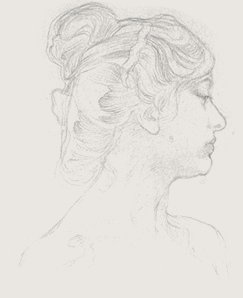
1888
-
Life
Mucha attends the Académie Colarossi
Mucha joins the Académie Colarossi and moves into lodgings at no. 1 rue Bara in the Latin Quarter.
The Académie Colarossi is founded by the Italian sculptor Filippo Colarossi. Located at 10 rue de la Grande-Chaumière, just a few streets away from Mucha’s lodgings, the Colarossi, like the Académie Julian, provides students with an alternative to the conservative education of the École des Beaux Arts.
1889
-
Life
Mucha begins working as a professional illustrator
Mucha is forced to leave the Académie Colarossi when Count Khuen-Belasi’s sponsorship suddenly ceases.
In need of an income, he secures a number of commissions to produce illustrations for French and Czech publishers.
-
The Exposition Universelle opens in Paris
-
Jules Chéret designs the first advertising poster
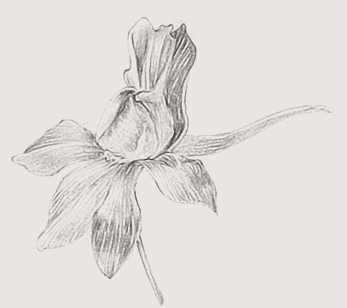
1890
-
Life
Mucha is introduced to Madame Charlotte’s Crémerie
Through the Polish painter Władysław Ślewiński, Mucha is introduced to Madame Charlotte Caron's Crémerie, a café directly opposite the Académie Colorossi where hard-up students are able to eat on credit and pay with their paintings.
The same year, Mucha moves into a room above the café at 13 rue de la Grande Chaumière.
Over the years, the Crémerie is frequented by numerous artists, musicians, composers and writers, including Paul Sérusier, Paul Gauguin, the Polish artist Stanisław Wyspiański and the Swedish dramatist and writer August Strindberg.
-
Life
Mucha is introduced to the Paris theatre world
Mucha becomes a regular contributor to Le Costume au théâtre et à la ville, a magazine published by Lemercier featuring drawings of theatre costumes. It is here that he produces his first drawing of Sarah Bernhardt as Cleopatra.
-
The Czechs establish their own art academy
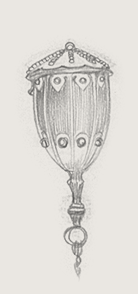
1891
-
Life
Mucha produces his first book illustrations for Armand Colin
Mucha is taken on as an illustrator for the Paris-based publisher Armand Colin.
Founded in 1870, Armand Colin was one of the first publishers to produce high quality school manuals just as primary education became mandatory in France.
Over the years, commissions include Charles Seignobos’s Scènes et Episodes de l’Histoire d’Allemagne, in collaboration with Georges Rochegrosse, and Scènes et Episodes de l’Histoire d’Espagne (unrealised).
-
Henri de Toulouse-Lautrec designs his first poster

1892
-
Life
Mucha turns his hand to teaching
Mucha begins giving drawing lessons in his studio. These classes, which become known as ‘Cours Mucha’, are so successful that he is later asked to teach at the Académie Colarossi. From 1898, he also runs a drawing course at James McNeill Whistler’s Académie Carmen.
-
Exhibition
Salon des Artistes français
Mucha exhibits, for the first time, at the Paris Salon held at the Palais des Champs Elysées.
He receives a ‘mention honorable’ for a selection of works illustrating Xavier Marmier’s Les Contes des Grand-Mères (1892).
1893
-
Life
Mucha buys a camera
Having tried his hand at photography on a borrowed camera while living in Vienna, Mucha decides to buy a 10 x 13 cm rectangular-format camera.
From this point on, photography becomes an essential part of his life, both in preparing his compositions, and as a support in its own right.
-
Czech nationalists protest at Germany’s hold over Prague
-
The Czech people become increasingly interested in their history
-
Louis Comfort Tiffany sets up a successful decorating company in New York
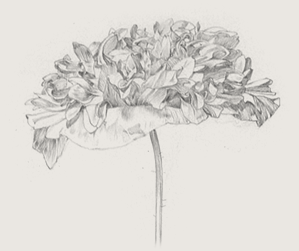
1894
-
Life
Mucha meets August Strindberg who introduces him to Occultism
Over a period of two years, the Swedish dramatist and writer August Strindberg frequents Madame Charlotte’s Crémerie.
Through Strindberg, Mucha is introduced to Mysticism and Occultism, which are to have a great impact on his life and work.
-
Life
Mucha works on Sarah Bernhardt’s Gismonda
Mucha is commissioned by the publisher Lemercier to design a special Christmas and New Year supplement for Le Gaulois magazine, including a feature on Sarah Bernhardt’s portrayal of Gismonda at the Théâtre de la Renaissance.
-
work
Poster for ’Gismonda’
On December 26, 1894, while correcting proofs for a friend at Lemercier's printing works, Mucha is asked to undertake a last minute commission. All the regular Lemercier artists on holiday and Sarah Bernhardt requires a new poster for her production of Gismonda at the Théâtre de la Renaissance due to open just a week later.
With its long narrow shape, its subtle pastel colours and the 'halo' effect around the subject's head, Mucha's poster marks a radical departure from traditional poster design. The poster is so popular with the Parisian public that collectors bribe bill stickers to obtain them or simply go out at night and, using razors, cut them down from the hoardings.
-
Dreyfus is convicted of treason
-
-
1895 — 1903 Breakthrough in Paris
Following the success of his poster Gismonda, Mucha became a leading Art Nouveau designer but ultimately resolved to pursue the Pan-Slavic ideal through his art.
1895
-
Life
Mucha signs a six year contract with Sarah Bernhardt
Mucha’s Gismonda poster is featured on hoardings across the city from on 1 January and creates a sensation.
Sarah Bernhardt signs a six year contract with Mucha who is responsible for designing posters, stage sets and costumes for Paris’ leading actress.
-
Life
Mucha meets the Lumière brothers
Mucha meets the Lumière brothers and participates in their cinematographic experiments, including a study of plant movements.
-
Cinematography is invented
-
The German art dealer Siegfried Bing opens a shop in Paris
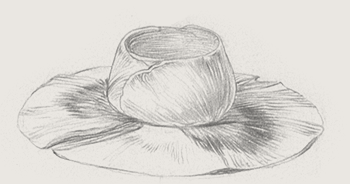
1896
-
Life
Mucha joins La Plume and the Salon des Cent
As public institutions begin to lose their monopoly on the arts, independent groups of artists are looking for ways to promote and circulate their work. Created in 1889 by the writer Léon Deschamps, La Plume is a monthly publication which features poems, short stories, exhibition reviews and illustrations by avant-garde artists. It counts Bonnard, Grasset, Toulouse-Lautrec and Ensor among its contributors.
The magazine also organises regular exhibitions, known as the Salon des Cent, at its premises. Mucha is invited to contribute to La Plume and to design a poster for the 20th Salon des Cent.
Both La Plume and the Salon des Cent are instrumental in promoting the poster as a medium in its own right.
-
Life
Mucha signs a contract with the printer Champenois
Mucha is taken on by the Imprimerie Champenois, one of the most important printers of the period 1880-1910.
The most expensive editions are printed on satin, vellum or Japanese paper, but clients can also order more affordable posters printed in eight colours or on card.
-
Life
Mucha moves to a new studio
Mucha moves to a studio at No.6, rue du Val-de-Grâce. The studio benefits from a large window and a glass ceiling, and this extra light improves conditions not only for painting, but also for photography. As a result, Mucha’s photographic output increases significantly.
The sculptor August Seysses has a studio in the same building, and it is after meeting Seysses that Mucha begins to experiment with sculpture and pastel.
-
work
The Seasons (series)
Mucha is commissioned by Champenois to create a set of decorative panels on the subject of the seasons.
Decorative panels have become increasingly popular as lithographic printing techniques improve. They are used to decorate walls and screens in private homes.
Mucha's Seasons series is so popular that he is asked by Champenois to produce at least two more sets based on the same theme in 1897 and 1900.
-
work
Poster for 'Job' cigarette paper
Mucha is commissed to design a poster for one of France's most popular brands of cigarette paper.
The name Job comes from the initials of Jean Bardou who invented a booklet of rolling papers made from rice paper. Originally the initials ‘JB’ were separated by a diamond, but as the brand grew in popularity people began to refer to it as Job.
Smoking is very much a male activity at the turn of the century, and Mucha's sensual woman gives the product a sense of illicit glamour.
1897
-
Life
The Imprimerie Champenois makes Mucha a household name throughout the world
In response to the popularity of his posters, the Imprimerie Champenois introduces Mucha’s work on a variety of supports, including decorative panels, calendars, postcards, theatre programs and menus.
The printing firm also licenses Mucha’s designs and illustrations to companies and publications throughout Europe and North America.
-
Exhibition
Exhibition of works by the painter A. Mucha
Mucha holds his first solo exhibition at the Galerie de la Bodinière, 18 rue St Lazare.
107 works are included in the show, and the preface to the exhibition catalogue is written by Sarah Bernhardt.
-
Exhibition
Exhibition of works by A. Mucha
Mucha is invited to hold a solo exhibition, featuring 448 works, at the Salon des Cent.
The exhibition is held at the premises of La Plume, 31 rue Bonaparte in the 6th arrondissement.
To mark the occasion, La Plume dedicates a special issue to the exhibition.
Over the next two years, Mucha’s work is exhibited in Vienna, Prague, Budapest, Munich, Brussels, London, New York and many other cities.
1898
-
Life
Mucha is initiated in the Masonic Lodge of Paris
Mucha becomes an apprentice member of the Paris Lodge of Freemasons.
-
Zola publishes ‘J’Accuse’
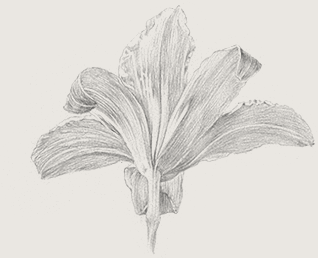
1899
-
Life
Mucha is commissioned to decorate the Bosnia-Herzegovina Pavilion for the Exposition Universelle of 1900
The Austro-Hungarian government commissions Mucha to produce decorations for the Exposition Universelle to be held in Paris in 1900.
In preparation for this work, the Austrian government sponsors Mucha to travel through the Balkans. It is while on this trip that the idea of the Slav Epic is born.
-
Life
Mucha branches into jewellery
Georges Fouquet is the son of one of Paris' most successful jewellers, Alphonse Fouquet. In 1895, he takes the reins of the family business and sets about exploring new and inventive forms of expression in jewellery.
For the 1900 exhibition, Fouquet is determined to create a truly innovative collection. In order to achieve this, he decides to enlist the help of Mucha who had demonstrated a talent for drawing jewellery in his posters.
The collaboration is a great critical success and the start of a three-year partnership. Together, Mucha and Fouquet redefine jewellery design. For the first time, materials are chosen for their aesthetic, rather than monetary, value.
1900
-
Life
Mucha is well-represented at the Exposition Universelle
In addition to his work for the Austro-Hungarian government, Mucha’s work is represented in a number of exhibitions at the Exposition Universelle.
His decorations for the Bosnia-Herzegovina Pavilion win silver prize, and he is made a Knight of the Order of Franz Josef I for his contributions to the empire.
-
work
Georges Fouquet (1858-1929), Paris, after design by Mucha: Ornamental Chain with pendants
Designed for the leading Parisian jeweller Georges Fouquet, this spectacular piece of jewellery is displayed on Fouquet's stand at the International Exhibition in Paris 1900.
Mucha combines elements from eastern and western art to create this opulent design.
-
The 1900 Exposition Universelle opens in Paris
-
The Paris Métro opens
-
Prague grows in importance
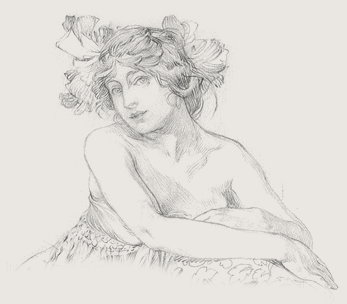
1901
-
Life
The French government recognises Mucha’s contribution to the Exposition Universelle
Mucha is awarded the Légion d’honneur by the French government for his contribution to the Paris Exhibition. The same year, he is elected a member of the Czech Academy of Sciences and Arts.
-

Theodore Roosevelt is elected 26th President of the US
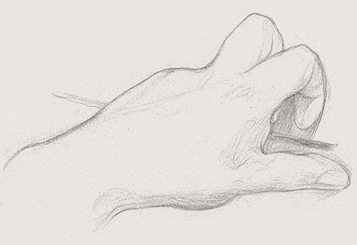
1902
-
Life
Mucha visits Prague and Moravia with Rodin
Mucha accompanies his friend, Auguste Rodin, to Prague on the occasion of Rodin’s exhibition at Jan Kotera’s new Mánes Pavilion in Prague. The two friends travel on to Moravia before Rodin leaves for Vienna.
Several years later, Rodin presents Mucha with a small bronze cast of Les Damnées.
-
Exhibition
Prima Esposizione Internazionale d'Arte Decorativa Moderna
Mucha's work is included in the 1st International Exhibition of Modern Decorative Art in Turin.
His sculpture La Nature (1900) and his ‘snake’ bracelet designed for Sarah Bernhardt and executed by Fouquet (1899) – both featured in the 1900 Paris Exhibition – are both included in the show.
-
The American industrialist Charles Richard Crane cultivates an interest in Czech history
-
Art Nouveau becomes the dominant style in decorative arts
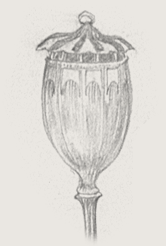
1903
-
Life
Mucha meets his future wife
Mucha is introduced to Marie (Maruška) Chytilová.
22 years his junior, Maruška (1882-1959) is an art student at the School of Applied Arts in Prague.
While visiting Paris with relatives, she enlists the help of her uncle, the eminent Czech art historian Dr. Karel Chytil, to arrange art classes with Mucha. Mucha obliges, encouraging Maruška to follow classes at the Académie Calarossi at the same time, and they spend each of the remaining days of her month-long sojourn together.
-
The Salon d’Automne is founded in Paris
-
-
1904 — 1909 American sojourn
Mucha visited the United States five times in six years to seek funds for his new project, the Slav Epic. The American millionaire Charles R. Crane became his sponsor.
1904
-
Life
Mucha travels to America
With the help and encouragement of one of his friends, Baroness Rothschild, Mucha makes his first trip to the US. His arrival makes front-page news in the American newspapers.
While in America, Mucha tries to embark on a new career as a society portrait painter, believing this to be a more lucrative line of work that will enable him to gather the funds necessary to complete his magnum opus, the Slav Epic.
Mucha receives his first portrait commission from Mrs. Wissmann, a relative of Baroness Rothschild and a well-connected figure of New York society.
1905
-
Life
Mucha makes a second trip to America
Mucha gives classes, known as the “cours Mucha”, at the New York School of Applied Design for Women.
Established in 1892 by philanthropist Ellen Dunlop Hopkins, the school provides courses in book cover design, stained glass, textile and wallpaper design and illustration. Mucha’s classes are held every Tuesday and are open to both men and women. They prove to be extremely popular.
During the trip, Mucha is befriended by President Roosevelt and his family.
-
work
Madonna of the Lilies
Mucha is commissioned to decorate a church in Jerusalem dedicated to the Virgin Mary. Ths is the final version of Madonna of the Lilies, one of the murals for the church.
The project is later cancelled for unknown reasons, so all that remains of this commission is this painting and earlier versions of it, as well as a design for a stained-glass window, Harmony, which is also in the Mucha Trust collection.
1906
-
Life
Mucha weds and returns to America with his new wife
Mucha returns from New York to Prague where he marries Maruška.
After their honeymoon in the small village of Pec in the highlands of South Bohemia, they return to the US, but this time to Chicago where Mucha is given a teaching post at the Art Institute.
1907
-

The Triple Entente between Britain, France and Russia is formed
-
Picasso paints Les Demoiselles d’Avignon

1908
-
Life
Mucha begins working for Charles Richard Crane
Mucha is commissioned by Charles Richard Crane, heir to R.T. Crane Brass and Bell Foundry, to paint the portraits of his two daughters, Josephine (The National Gallery, Prague) and Frances (unfinished). Mucha had met Crane at a banquet in aid of Russia in 1904.
Crane becomes interested in Mucha’s Slav Epic project and introduces him to Woodrow Wilson, then a professor at Princeton University and future President of the United States (1913-21), who shares his interest in political issues in Central Europe.
-
work
Portrait of Josephine Crane Bradley as Slavia
To mark the marriage of his daughter Josephine to Harold C. Bradley, Charles Richard Crane commissions Mucha to paint a portrait of Josephine as the Slav goddess, Slavia.
The portrait is incorporated into the interior design of a new house built by Crane for the newlyweds.
-
work
Comedy: study for a mural for the German Theatre, New York
Mucha is commissioned to decorate the interior of the newly renovated German Theater in New York. This includes five large decorative panels, the stage curtain, and decorative elements for the foyer, the corridor, the staircase and the auditorium.
The central panel, which becomes known as The Quest for Beauty, is flanked by two vertical panels: Tragedy and Comedy.
In 1929 the theatre is pulled down. The only surviving elements are the preliminary designs.
-

Bosnia-Herzegovina is annexed to the Austro-Hungarian Empire
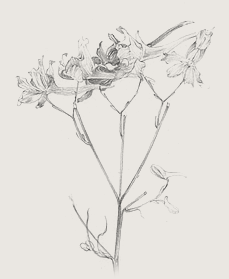
1909
-
Life
Mucha becomes a father
Mucha’s daughter Jaroslava is born on 15 March in New York.
-
Life
Mucha works with the American actress Maude Adams
Mucha is commissioned to paint the American actress Maude Adams in the role of Joan of Arc in a translation of Friedrich Schiller's Die Jungfrau von Orleans (The Maid of Orleans).
Maude Adams was one of the most successful and highly-paid performers of her day, and the play was put on for a crowd of around 2000 spectators in a one-night gala performance at Harvard University Stadium.
The portrait served as a poster for the event and Mucha was also responsible for designing the costumes and sets.
-
Life
Mucha begins work on the Slav Epic
The Muchas holiday in Rosice, South Moravia, where Alphonse makes his earliest sketches for the Slav Epic.
While there, Mucha is asked by the City of Prague to decorate the newly built Obecní dům (Municipal House).
-
Life
Mucha gets financial backing for the Slav Epic
Mucha obtains Crane’s promise of financial support for his Slav Epic project.
-
Futurism is born
-
-
1910 — 1928 Return to Bohemia
Mucha spent nearly two decades on the creation of the Slav Epic, which he and Crane presented to the newly formed Czechoslovakia on its 10th anniversary.
1910
-
Life
Mucha returns to Prague where he decorates the town hall
Mucha leaves the US for Prague where he begins work on the Obecní dům (Municipal House). The decorative scheme includes small panels, murals and a ceiling painting for the Lord Mayor’s Hall.
With Crane’s recent promise of financial support for his Slav Epic project, Mucha rents a studio and apartment in Zbiroh Castle, a 12th century château in West Bohemia. He devours all available books on the subject and draws up a list of specialists in the field, such as Ernest Denis, a French expert on Slavonic history who he meets in Paris the following year.
-
work
Murals by Mucha in the Lord Mayor's Hall, Obecní Dům (Municipal House), Prague
Mucha is enlisted to decorate the circular Lord Mayor's Hall in the newly errected Obecní Dům (Municipal House), a municipal centre for Czech social and official gatherings. Designed by architects Antonín Balšánek and Osvald Polívka, it is a temple to Czech Art Nouveau.
Mucha's designs celebrate the heroic past of the Czech people and the unity of the Slav nations, and prefigure his Slav Epic project both in subject and style.
1912
-
Life
Mucha completes the first three canvases of the Slav Epic
Mucha visits Dubrovnik and Lopud Island on the Croatian coast. He paints his first oil sketches for the Slav Epic while staying at a friend’s villa on Lopud Island.
At the end of the year, he presents the city of Prague with his first three canvases: The Slavs in Their Original Homeland (cycle no.1), The Celebration of Svantovít Festival (cycle no.2) and The Introduction of the Slavonic Liturgy (cycle no.3).
-
work
'The Slav Epic' cycle No.1: The Slavs in Their Original Homeland. Between the Turanian Whip and the Sword of the Goths (between the 3rd and 6th centuries AD).
Mucha starts his magnum opus, the Slav Epic, with an episode taken from the 4th to 6th centuries: the Germanic persecution of the Slavic tribes who dwelled in the marshes between the Baltic Sea and the Black Sea.
The violence and suffering of the central figures of Mucha's first canvas is remedied by the promise of peace and freedom for the Slav people personified in the pagan priest and two youths in the top right of the composition.
-
work
Poster for the 'Lottery of the Union of Southwestern Moravia'
Mucha is commissioned to design a poster to promote a lottery for raising funds for Czech schools in southwestern Moravia.
As a staunch patriot, Mucha jumps at the chance to get involved in efforts to preserve the Czech language and culture against the Austro-Hungarian Empire's ruthless policy of Germanisation.
-
The first Balkan war breaks out
-

The Titanic sinks on her maiden voyage from England to New York
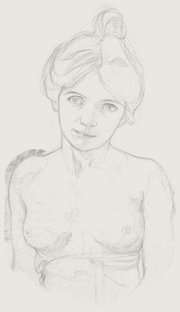
1913
-
Life
Mucha undertakes further technical and historical research for the Slav Epic
Mucha travels to Versailles to study methods for hanging and lighting large paintings.
He attends the opening of the Armory Show in New York, and travels to Chicago to discuss the Slav Epic with his patron Crane.
He also makes a research trip to Russia to collect material for his fourth Slav Epic canvas, The Abolition of Serfdom in Russia (cycle no.19).
-
The second Balkan War breaks out
-
Marcel Duchamp shocks audiences at the Armory Show in New York
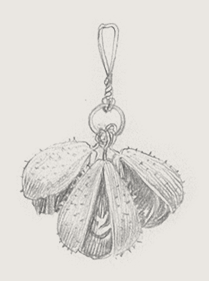
1914
-
Life
Mucha presents three more Slav Epic canvases to the City of Prague
Mucha presents The Defence of Sziget (cycle no.14), The Printing of the Bible of Kralice (cycle no.15) and The Abolition of Serfdom in Russia (cycle no.19) to the City of Prague.
-
The First World War breaks out

1915
-
Life
Jiří Mucha is born in Prague
Mucha’s son Jiří is born on 12 March in Prague.
Jiří later becomes a successful novelist and his father’s biographer. From the 1960s, he organisises a number of retrospective exhibitions that help to revive interest in his father’s work.
-
The first steps towards an independent Czechoslovak state are taken
-

Czech-born Jewish writer Franz Kafka publishes his seminal short story Die Verwandlung (The Metamorphosis)
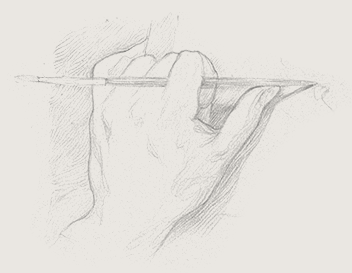
1916
-
Life
Mucha completes three more Slav Epic canvases
Mucha entrusts three more Slav Epic canvases to the City of Prague: Milič of Kroměříž (cycle no.7), Master Jan Hus Preaching at the Bethlehem Chapel (cycle no.8) and The Meeting at Křížky (cycle no.9), which together form the triptych Magic of the Word.
-

French and German armies suffer considerable loss at the Battle of Verdun, the longest single battle of the First World War
-

Charles I is crowned Emperor of the Austro-Hungarian Empire
-
The Dadaist movement is born in Zurich
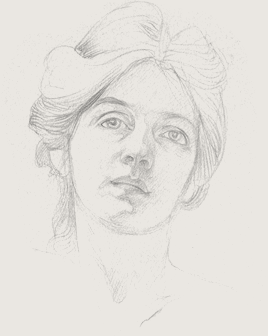
1917
-
The Russian Revolution brings Tsarist rule to an end
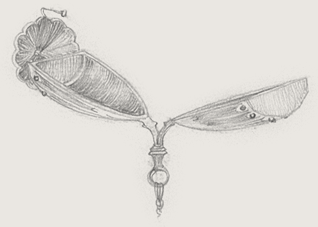
1918
-
Life
Mucha’s designs appear on Czechoslovakia’s first postage stamps
Czechoslovakia’s first series of postage stamps, designed by Mucha, are issued.
Mucha presents two more Slav Epic canvases to the City of Prague: Petr Chelčický at Vodńany (cycle no. 12) and Jan Amos Komenský (cycle no.16).
-
The First World War comes to an end
-
Czechoslovakia is founded

1919
-
Life
Mucha’s designs appear on Czechoslovakian bank notes
Mucha designs the 100 crown banknote for the Bank of Czechoslovakia which comes into circulation on 5 July. This is followed by his designs for 1,000, 500, 50, 20,10 and 5 crown notes which appear between 1919 and 1931.
-
Exhibition
Exhibition of paintings by Alfons M Mucha
The first exhibition of the Slav Epic is held at the Klementinum, Prague.
Five canvases are included in the show, including The Celebration of Svantovít Festival (1912), The Abolition of Serfdom in Russia (1914), and the Magic of the Word Triptych (1916).
The exhibition travels to the US for a touring exhibition, attracting over 53,000 visitors in a single week at the Art Institute of Chicago.
-
Czechoslovakia is officially recognised

1920
-
Exhibition
Alphonse Mucha's Slav Epic
Mucha’s Slav Epic paintings are exhibited at the Chicago Art Institute.
The show attracts over 50,000 visitors in a single week.
-

The League of Nations is founded and the first General Assembly is held in Geneva with 41 national representatives

1921
-
Life
Mucha receives a number of commissions from the US
While in the US for his exhibition, Mucha is awarded a number of commissions, including twelve covers for the monthly magazine, Hearst’s International.
-
Exhibition
Historical Paintings of the Slavic Nations by Alfons Mucha
The Brooklyn Museum in New York organises a major retrospective of Mucha’s work featuring five Slav Epic canvases alongside 15 oil paintings, 130 drawings and his best-known posters.
The exhibition is a huge critical and commercial success, with around 600,000 visitors.
-

Mussolini founds the Partito Nazionale Fascista (National Fascist Party) in Rome

1922
-
Life
Mucha is elected Sovereign Grand Commander of the Czech Supreme Council of Freemasons
-
work
Russia Restituenda [Russia Must Recover]
After the collapse of the Russian provisional government to the Soviets, Russia falls victim to civil war and a crippling economic situation. In addition to the casualties of war, millions die through widespread disease and starvation.
In this poster, Mucha calls upon Western countries to send shipments of food and grain.
-
The Soviet Union is formed
-

Following the March on Rome, Mussolini’s Fascist Party comes to power in Italy

1923
-
LifeClick here to find out more about Mucha presents three more Slav Epic canvases to the City of Prague

Mucha presents three more Slav Epic canvases to the City of Prague
Mucha presents the City of Prague with three more Slav Epic canvases: Tsar Simeon of Bulgaria (cycle no. 4), After the Battle of Vítkov (cycle no.11) and The Hussite King Jiří of Poděbrady (cycle no.13).
-

The Treaty of Lausanne settles the partitioning of the Ottoman Empire and sets out the boundaries of Greece, Bulgaria and Turkey

1924
-
Life
Mucha conducts further research for the remaining Slav Epic canvases
Mucha makes research trips to the Balkans and Greece where he visits the peninsulas of Halkidike and Thessaloniki in Northern Greece, and the Serbian Orthodox monastery of Chilandar (now Hilandar) in Mount Athos.
Mucha completes three more Slav Epic Canvases: The Bohemian King Přemysl Otakar II (cycle no.5), The Coronation of the Serbian Tsar Štěpán Dušan as East Roman Emperor (cycle no.6) and After the Battle of Grünwald (cycle no.10).
-
Crane develops closer ties with Czechoslovakia
-
The Surrealist Manifesto is published

1925
-
Life
Mucha publishes a book on Freemasonry
Mucha publishes his book Svobodné zednářství (Freemasonry), to mark the 333rd anniversary of the birth of Jan Amos Komenský (1592-1670), considered by many Czechs at that time at the spiritual founder of Freemasonry.
-
Hitler publishes the first volume of Mein Kampf
-
Art Deco dominates modern design

1926
-
Life
Mucha completes the final three Slav Epic canvases
The final Slav Epic canvases are painted in a school auditorium in Prague: The Holy Mount Athos (cycle no.17), The Oath of Omladina under the Slavonic Linden Tree (cycle no. 18) and The Apotheosis of the Slavs (cycle no.20).
1927
-
work
Portrait of Mucha's Daughter, Jaroslava
Mucha painted his daugher Jaroslava in an elaborate headscarf with bouffant sides as an alllusion to her Slav ancestry.
1928
-
Life
Mucha and Crane bequest the Slav Epic to the City of Prague
Mucha and Charles Richard Crane officially bequest the complete Slav Epic cycle to the City of Prague to mark the 10th anniversary of the creation of Czechoslovakia.
-
work
1918-1928: Poster for the 10th Anniversary of the Independence of the Republic of Czechoslovakia
-
Exhibition
Slovanská epopeje
19 Slav Epic canvases are exhibited at Prague’s Trade Fair Palace to inaugurate the palace in celebration of the 10th anniversary of the foundation of Czechoslovakia.
The exhibition excludes one unfinished canvas, The Oath of Omladina.
-
-
1929 — 1939 Visions for the future
Under the growing threat of war, Mucha began working on a monument for humanity that was never finished; he died shortly after the German invasion of Prague.
1929
-
St.Vitus Cathedral renovation is completed
-

The Wall Street Crash in the US precipitates a severe worldwide economic depression

1930
-
work
'The Slav Epic' cycle No.20: Apotheosis: Slavs for Humanity. Four Stages of Slav History in Four Colours (1918).
In the last painting in the series, Mucha brings together all the themes addressed in the other 19 episodes of the Slav Epic and celebrates the independence of the Slav nations.
The painting is composed of four different parts characterised by four different colours, each representing a successive period in Slav history.
The bare-chested figure at the centre of the composition is the embodiment of the new, strong and independent republic, guided and protected by a Christ figure behind.
1931
-
Life
Mucha is commissioned to design a stained glass window for Prague Cathedral
Mucha is commissioned by the Slavia Bank to design a stained-glass window for the recently restored Gothic North Nave of St. Vitus Cathedral in Prague.
1932
-
Life
Mucha paints a mural for the Nymburk City Saving Bank
Mucha completes a mural for the Nymburk City Saving Bank, The Surrender of Nymburk in the Year of Our Lord 1421 to God and the People of Prague.
-
Life
Mucha and his family move to France
Mucha and his family move to Nice, France, where they stay for two years.
1933
-
work
The Light of Hope
The 15th anniversary of the independence of Czechoslovakia is shrouded by a sense of foreboding as news of Hitler's rise to power spreads. The Czech borders are inundated with German refugees and Nazism begins to gain currency at home.
It is in this ominous atmosphere that Mucha decides to make a large oil painting depicting the horrors of war. This oil, entitled Light of Hope, is believed to be a study for the work which never came to fruition.
The picture features a girl dressed in white, protecting the light of hope with her hands. Her figure stands out from the darkness, from which the figures of terrified people can be discerned.
-
Hitler comes to power
-
Czechoslovakia is hard hit by the depression

1934
-
Life
Mucha is decorated by the French government
Mucha is made an Officier de la Légion d’Honneur, one of the highest decorations in France, on the recommendation of the French President, Raymond Poincaré (1860-1934).
-
Life
Mucha completes his mural The Song
Mucha’s mural for the Hlahol Choir, The Song (begun in 1921), is installed in the Great Hall of the society’s building in Prague.
1936
-
Life
Mucha embarks on another series of large-scale paintings
Mucha starts working on a new project for a triptych on a similar scale to the Slav Epic canvases: The Age of Love, The Age of Wisdom and The Age of Reason. The triptych remains unfinished.
-
work
Study for 'The Three Ages' triptych: Reason, Wisdom and Love [unfinished project]
Mucha embarks on his final series, The Three Ages.
Intended not for the nation but for all mankind, it proves even more ambitious than the Slav Epic in terms of content.
Mucha's failing health, worsened by anxiety about the impending war and the fate of his country, prevents him from completing this monumental project.
-
The Spanish civil war breaks out

1938
-
Life
Mucha falls ill
Mucha catches pneumonia in the autumn and his work slows down.
-
The Anschluss and the Munich Pact
-
Germany invades Czechoslovakia

1939
-
Life
Mucha is arrested by the Gestapo
Mucha’s Masonic activities arouse suspicion among the Germans and he is arrested by the Gestapo in March. He is released after several days of questioning, but his health deteriorates rapidly.
-
Life
Mucha dies 10 days before his 79th birthday
Mucha dies on the 14 July. He is buried at the Slavín Cemetery in Vyšehrad, Prague. Despite the ban on public gatherings and speeches enforced by the Germans, the Czech Art Academician, Max Švabinský, delivers a funeral speech to a large crowd of mourners.
-
The Second World War breaks out
-
-
1940 — 1991 Preserving Mucha's legacy
Mucha’s work was almost forgotten after his death, but his artistic legacy was preserved and rehabilitated by his son Jiří after the Second World War.
1940
-
Life
Jiří Mucha marries Czech composer Vítězslava Kaprálová
Mucha's son Jiří marries his first wife Vítězslava Kaprálová, a young Czech composer, in Paris.
Their marriage ends two months later when she falls ill and dies prematurely at the age of 25.
When France falls, Jiří escapes to Agde in southern France with the remains of the newly formed Czech army.
-
Germany continues its offensive

1941
-
Life
The Slav Epic canvases are taken to a secret location
The Slav Epic canvases are hidden in underground storage in the Bohemian National Archives during the German occupation.
-
Life
Jiří moves to England
Jiří moves to England, where he joins the Royal Air Force. He later becomes a war correspondent for the BBC.
in the spring, Jiří meets Geraldine (née Thomsen), a Scottish composer; they marry that autumn.
-
The U.S. enters World War II

1942
-
Resistance to Nazi occupation gains momentum
-
The ‘Art of this Century’ gallery opens in New York

1944
-
France and Czechoslovakia are liberated

1945
-
Life
Jiří and Geraldine return to Prague
Jiří returns to Prague with Geraldine and the couple move in with Maruška and Jaroslava.
The Slav Epic canvases are transferred to another underground storage space in Prague. It is here that they suffer water damage during a flood.
-
Germany Surrenders
-
Francis Bacon causes a sensation

1946
-
The Communist Party comes to power in Czechoslovakia

1948
-
Life
John Mucha is born in London
Jiří and Geraldine’s only son, John, is born in London.
Proposals for the placement of the Slav Epic canvases are discussed but no decision is reached.
-
COBRA is formed in Paris

1949
-
Communism gains ground

1950
-
Life
The Slav Epic moves to Moravský Krumlov
The Slav Epic canvases are handed over to the National District Committee in Moravský Krumlov in January in order to be stored in the town’s castle. The work remains the property of the City of Prague.
1951
-
Life
Jiří is imprisoned by the Communists
Jiří is arrested by the Communist government for alleged espionage. The State Prosecutor demands the death penalty but he is sentenced to hard labour at the Jachymov uranium mines.
1953
-

Stalin dies in the outskirts of Moscow and is succeeded by Nikita Khrushchev

1954
-
Life
Jiří is released from prison
Jiří is released from prison due to the efforts of his wife Geraldine.
-

The KGB, the national security agency of the Soviet Union, is established

1958
-

The European Economic Community (EEC) is created

1959
-
Life
Maruška dies in Prague on 14 March
-
The Guggenheim Museum opens in New York
-

Charles de Gaulle becomes President of France

1962
-
Life
The City of Prague Gallery commissions the restoration of the first nine canvases of the Slav Epic at Moravský Krumlov castle
-
The World comes close to a Nuclear War
-
The New York art scene takes centre stage

1963
-
Life
The Slav Epic goes on show
The nine restored canvases of the Slav Epic are exhibited in the Knight’s Hall and the Chapel of Moravský Krumlov castle. The City Council of Moravský Krumlov funds the restoration of the remaining canvases.
-
Exhibition
Art Nouveau and Alphonse Mucha
Two Mucha retrospectives are held simultaneously in London: Art Nouveau and Alphonse Mucha at the Victoria & Albert Museum and a two-part show, Alphonse Mucha – Art Nouveau 1890-1913, at the Grosvenor and Arthur Jeffress galleries.
Curated by Brian Reade, the Victoria & Albert retrospective is a noted success.
-

A treaty banning nuclear weapon tests is signed between the US, the Soviet Union and Britain
-

President Kennedy is assassinated in Dallas, Texas
-
Video Art is born

1966
-
Life
The first biography on Mucha’s life is published
Mucha’s first biography written by Jiří, Alphonse Mucha: The Master of Art Nouveau is translated into English by Geraldine and published in Prague.
-
Exhibition
A Master of Art Nouveau, Alphonse Mucha
The Bibliothèque Forney in Paris presents an exhibition entitled Un Maître De L'art Moderne : Alphonse Mucha (A Master of Art Nouveau: Alphonse Mucha).
1967
-
Exhibition
Alphonse Mucha 1860-1939: Posters and Graphic Work
1968
-
Life
Moravský Krumlov becomes the home of the Slav Epic
All twenty Slav Epic canvases are exhibited in Moravský Krumlov castle. The castle becomes the home of Mucha’s gift to the nation (until 2011).
-
The Prague Spring is suppressed by the Soviets
-
The conflict in Vietnam intensifies
-
French revolutionaries take to the streets in Paris

1969
-

Apollo 11 successfully lands on the moon

1970
-

Lubomír Štrougal becomes Prime Minister of Czechoslovakia

1972
-
Exhibition
An Exhibition of Books and Periodicals Illustrated by Alphonse Mucha
This exhibition of Mucha's illustrations was presented at the College Library of the University of California in Los Angeles as part of International Book Year.
-
The 1972 Summer Olympics are held in Munich, West Germany

1973
-
Exhibition
Poster Artist Mucha
The Mount Royal Station Gallery of the Maryland Institute College of Art in Baltimore presents Poster Artist Mucha.
1974
-
Life
The first book on Mucha's photography is published
The first monograph on Mucha’s photographic work, Alphonse Mucha Photographs by Graham Ovenden, is published in London (Academy Editions) and New York (St. Martin’s Press)
-
Exhibition
Alphonse Mucha
The Musée Horta in Brussels presents an exhibition of Mucha's work.
-
Aleksandr Solzhenitsyn is expelled from the Soviet Union

1977
-
Charter 77 is founded
-
The Centre Georges Pompidou opens in Paris

1978
-
Eastern Europe distances itself from the Soviet Union

1980
-
Exhibition
Mucha, 1860–1939: Peintures, illustrations, affiches, arts decoratifs
The Grand Palais in Paris hosts a retrospective of Mucha's work organised by the Musée d'Orsay.
Jiří Mucha donates a number of works to the French state at this occasion.
The exhibition travels to the Mathildenhöhe in Darmstadt and the National Gallery of Prague.
-
Cindy Sherman completes her landmark 69 photograph series, Untitled Film Stills

1983
-
Exhibition
Alphonse Mucha
The Tokyo Shimbun organises the first retrospective in Japan, which premiers at the Isetan Museum of Art in Tokyo and tours to Nagoya, Kyoto, Fukuoka, Kobe, Yokahama and Sapporo.
-
Cold War Tensions Escalate

1984
-
Life
'Alphonse Mucha: The Complete Posters and Panels' is published
Alphonse Mucha: The Complete Posters and Panels by Jack Rennert and Alain Weill is published in Paris (Henri Veyrier) and in Uppsala, Sweden (Hjert and Hjert).
1985
-
Mikhail Gorbachev comes to power

1989
-
Life
Jiří becomes Chairman of the Czechoslovak PEN Club
Established in Prague in 1925, the Czechoslovak PEN club brings together some of the most important names in Czechoslovak literature.
-
Exhibition
Alfons Mucha, Meditation and Message
The Museum Fridericianum in Kassel, West Germany, hosts an exhibition of Mucha's work.
-
Communism collapses in Eastern Europe

1991
-
Life
Jiří dies in Prague on 5 April
-
The Gulf War Erupts
-
The Soviet Union is dissolved
-
-
1992 — 2012 The Mucha Foundation
Jiří’s efforts were continued by the Mucha Foundation, established by his family. Since 1993, the foundation has been organising exhibitions globally, keeping Mucha’s legacy alive.
1992
-
Life
The Mucha Foundation is created
Jiří’s widow Geraldine and his son and heir John establish the Mucha Trust and the Mucha Foundation.
-
Yugoslavia breaks up
-
The Young British Artists become household names

1993
-
Life
Mucha Trust establishes Mucha Limited
Mucha Limited is set up to develop and manage Mucha’s copyright and the use of the Mucha brand and trademarks.
-
Exhibition
Alphonse Mucha
The Mucha Foundation organises its first exhibition, Alphonse Mucha, at the Barbican Art Gallery in London.
Focusing on Mucha’s Parisian period and the celebrated theatrical and commercial posters produced at this time, visitors were invited to discover the scope of Mucha’s work through a selection of jewellery, sculpture, architectural and theatrical designs, magazine covers, book jackets and illustrations, paintings, drawings and photographs.
-

Václav Havel becomes the 1st President of the Czech Republic
-

The European Community establishes the European Union, a European single market

1994
-
Exhibition
Alphonse Mucha: Pastels, Posters, Drawings and Photographs
The Mucha Foundation presents Alphonse Mucha: Pastels, Posters, Drawings and Photographs at the Imperial Stables in Prague.
-
Exhibition
Alfons Mucha: The Slav Epic
The Mucha Foundation participates in Alphonse Mucha: The Slav Epic, held at the Kunsthalle in Krems, Austria, from July to October 1994.
-

NATO becomes actively involved in the armed conflict in Bosnia and Herzegovina
-
The First Chechnya War breaks out

1995
-
Exhibition
Alphonse Mucha: His Life and Art
The Mucha Foundation participates in a major retrospective organised by Tokyo Shimbun: Alphonse Mucha: His Life & Art.
The show is presented in Tokyo, Kyoto, Shimonoseki, Chiba, Kochi, Kitami, Osaka, Nagoya, Koriyama and Yokohama.
1997
-
Exhibition
Alphonse Mucha and the Spirit of Art Nouveau
The Mucha Foundation organises Alphonse Mucha and the Spirit of Art Nouveau at the Calouste Gulbenkian Museum in Lisbon.
The exhibition travels to the Museum für Kunst und Gewerbe in Hamburg and the Hôtel de Ville at the Grand-Place in Brussels.
1998
-
Life
The Mucha Foundation opens the Mucha Museum in Prague
The Mucha Foundation opens the only official museum dedicated to Alphonse Mucha, which soon becomes the most visited museum in the Czech Republic.
All the works in the museum are from the Mucha Trust Collection and the work of the Museum directly supports the work of the Foundation.
-
Exhibition
Alphonse Mucha: The Spirit of Art Nouveau
The Foundation participates in a major travelling retrospective organised by Art Services International. The show is presented in San Diego, Seattle, West Palm Beach, Raleigh, Tulsa, Reno, Massachusetts and Memphis.
The exhibition covers Mucha's entire career and features over 100 of his most important paintings, posters, panneaux décoratifs, jewellery, sculpture, pastels, drawings and illustrations.
A 352-page, full-colour catalogue, written by an international team of Mucha specialists, accompanies the exhibition.
-
U.S. Embassies are bombed

1999
-
The Euro, the official currency of the eurozone, is established
-
Leonardo de Vinci’s The Last Supper goes back on public display

2000
-
Life
Interest in Mucha's photography grows
Mucha’s photographic work is featured in the 3rd volume of the Foto Torst series presenting historical and contemporary Czech photographers (Torst, Prague).
-
Life
The Victoria & Albert puts Art Nouveau back on the art historical map
The Victoria & Albert Museum in London organises a major reappraisal of Art Nouveau, Art Nouveau 1890-1914. It includes a number of works by Mucha.
The exhibition 'rehabilitates' the intellectual and artistic heritage of Art Nouveau and repositions it in the history of Modernism.
Paul Greenhalgh, Head of Research at the Victoria and Albert Museum and curator of the exhibition, argues that Art Nouveau was the first style to be promoted by mass communication and the first self-conscious attempt to create something that looked modern.
The exhibition travels to the National Gallery in Washington D.C.
-
Exhibition
Alphonse Mucha: Master of Art Nouveau
The Mucha Foundation organises the exhibition Alphonse Mucha: Master of Art Nouveau, at the City Art Centre in Edinburgh and Ferens Art Gallery in Hull.
-

Vladimir Putin is elected President of Russia
-
Slobodan Milošević leaves office
-
Tate Modern opens in London

2001
-
Al-Qaeda attacks the US

2002
-
War is waged in Afghanistan
-
A painting by Rubens fetches a record price at auction

2003
-
Exhibition
Alfons Mucha
Organised by the Mucha Foundation, Munich's Museum Villa Stuck and Berlin's Broehan Museum, this exhibition explores Mucha’s multifaceted artistic achievements through his paintings, photographs, sculptures, drawings and pastels, as well as furniture designs, book covers, product packaging and jewellery from all stages of his career.
-
The Iraq War begins

2004
-
Exhibition
Alphonse Mucha: Treasures from the Mucha Foundation
The Nippon TV Network Corporation organises a major retrospective in collaboration with the Mucha Foundation.
The exhibition includes 240 items, with approximately 100 items on loan from the Mucha Foundation.
Between 2004 and 2006, it travels to six cities: Takamatsu, Tokyo, Nagoya, Hamamatsu, Matsue and Osaka.
-
The basis for the War in Iraq is found to be illegitimate

2006
-
Exhibition
Alphonse Mucha
The most comprehensive exhibition to be mounted in Northern Europe is organised by the Mucha Foundation and the Amos Anderson Museum in Helsinki.
The exhibition presents around 190 works from the Mucha Trust collection, including graphic works, decorative designs, pastels, drawings, oil paintings, photographs and jewellery.
The exhibitions travels to Finland (Helsinki, Turku), Denmark (Copenhagen), Belgium (Liège), Sweden (Stockholm) and Poland (Warsaw, Poznań).
-
Serbia and Montenegro gain independence

2007
-

The Russian Orthodox Church Abroad and the Moscow Patriarchate re-unite after 80 years of schism

2008
-
Exhibition
Alphonse Mucha. Seduction, Modernity and Utopia
The Fundacio La Caixa organises a major retrospective in partnership with the Mucha Foundation.
Alphonse Mucha 1860-1939: Seduction, Modernity, Utopia explores all facets of Alphonse Mucha’s art in relation to four broad themes: Theatre, Beauty, Mystery and Modernity.
The exhibition tours Spain, showing in six cities: Barcelona, Madrid, Palma, Salamanca, Tarragona and Lleida.
-
The World is hit by a global financial crisis
-

Barack Obama becomes the first African-American President
-
The exhibition 'From Russia' opens at London's Royal Academy

2009
-
Exhibition
Alfons Mucha
The Mucha Foundation participates in a major travelling retrospective which opens at the Österreichische Galerie Belvedere in Vienna before travlleing to the Musée Fabre in Montpellier, and the Kunsthalle Hypo Kulturstiftung in Munich.
Among the show's highlights are the reconstruction of the Bosnia-Herzegovina pavilion for the Paris World Fair (1900), and the presentation of two monumental paintings from the Slav Epic (1910-1926).
-
Exhibition
Alfons Mucha: Czech Master of the Belle Epoque
The Mucha Foundation co-organises Alfons Mucha: Czech Master of the Belle Epoque, presented at the Museum of Fine Arts in Budapest and the Moravian Gallery in Brno.
Focusing on Mucha's motifs of women, the exhibition examines themes such as the femme fatale, Sarah Bernhardt, the femme commerciale et artistique, Mucha’s advertising and art posters, the femme symbolique and Slavia and other female personifications with Slavic features.
The exhibition is held as part of the 2009 Spring Cultural Festival in Budapest and marks the Czech presidency of the EU in 2009.
2010
-
Life
The dispute over the rightful home of the Slav Epic intensifies
The City of Prague requests that Moravský Krumlov return the Slav Epic canvases. Over a thousand people gather in Moravský Krumlov to protest against the planned move of Mucha’s masterpiece from the town.
-
Exhibition
Alphonse Mucha 150th Anniversary Exhibition: The Apotheosis of Love
To commemorate the 150th Anniversary of Mucha’s birth, the Foundation organises a travelling retrospective, Alfons Mucha: The Apotheosis of Love.
The exhibition is presented in Prague, Kutná Hora, and Ostrava.
-
The financial crisis in Europe intensifies

2011
-
Life
The Slav Epic canvases are seized by the City of Prague
The City of Prague Gallery forcefully removes the Slav Epic canvases from Moravský Krumlov to Prague.
-
The Arab Spring gains momentum
-
Osama bin Laden is killed during an American military operation in Pakistan
-
A painting by Cézanne is sold for 250 million USD

2012
-
Life
Geraldine Mucha dies aged 95
Geraldine Mucha, Alphonse Mucha's daughter-in-law, dies at her home in Prague on Friday 12th October at the age of 95, surrounded by family and friends.
-
Exhibition
Alphonse Mucha: Inspirations of Art Nouveau
Alphonse Mucha: Inspirations of Art Nouveau is presented as the inaugural exhibition for the opening of the National Czech & Slovak Museum & Library, in Cedar Rapids, Iowa.
Featuring over 230 rare works by Mucha, including paintings, jewellery, sculptures and lithographs, it is the first exhibit of this size and caliber to appear in the United States since 1999, and the first of its type to appear in the Midwest region.
-
Click or drag the timeline to move faster
-
Begin- nings
-
Artistic training
-
Breakthrough in Paris
-
American sojourn
-
Return to Bohemia
-
Visions for the future
-
Preserving Mucha's legacy
-
The Mucha Foundation






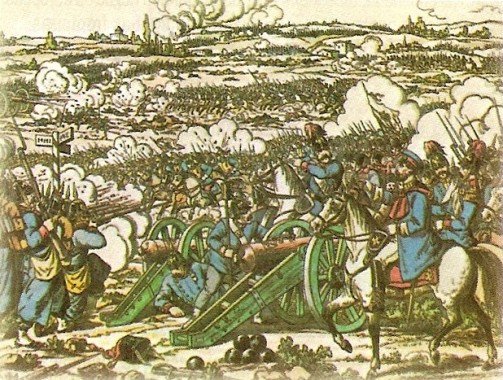






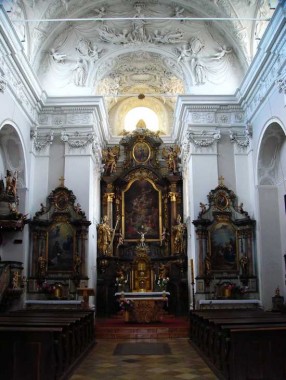

_Street_View_1880s.jpg)

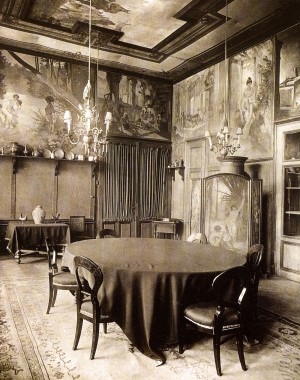


.jpg)

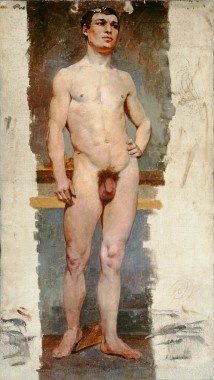






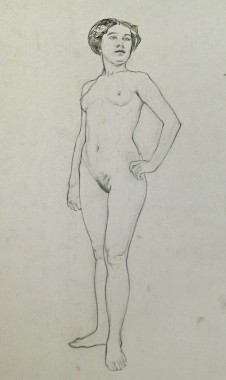
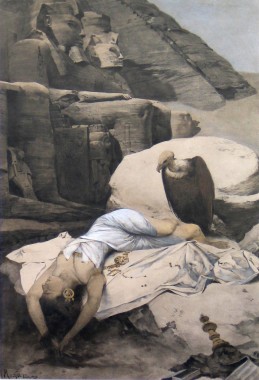









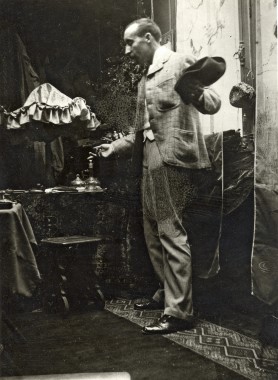
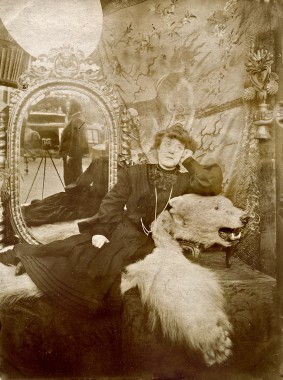




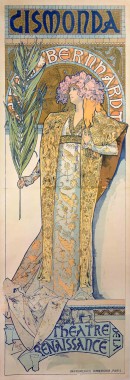











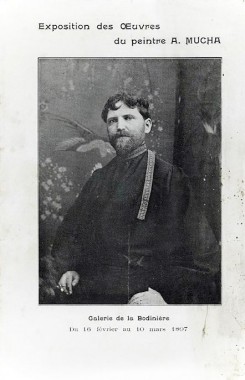


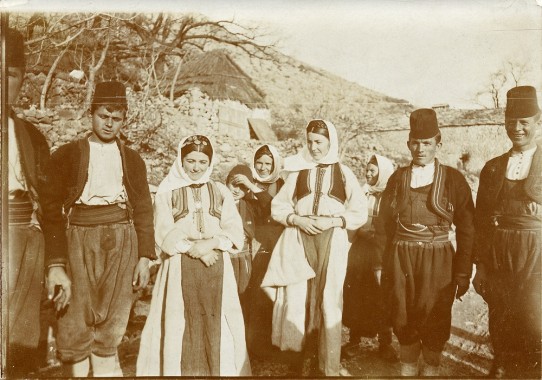








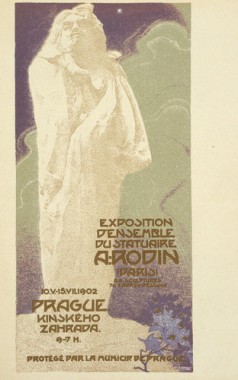



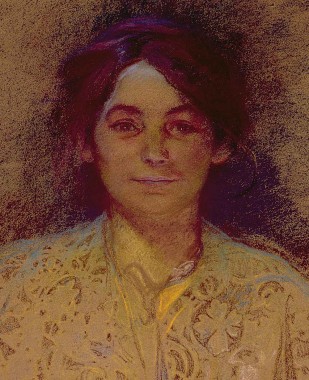

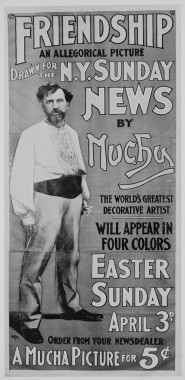









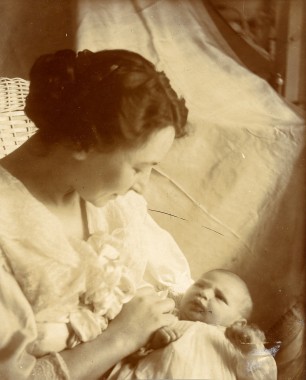
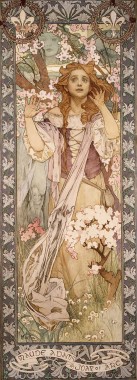










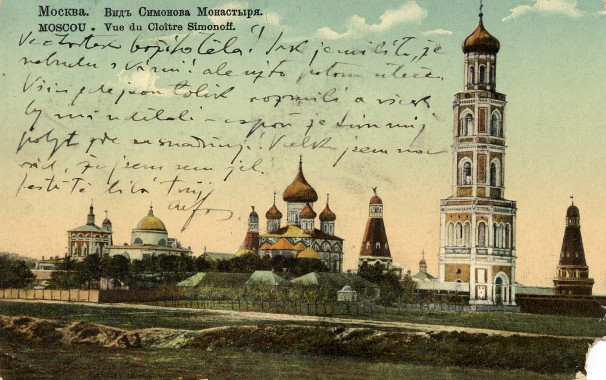



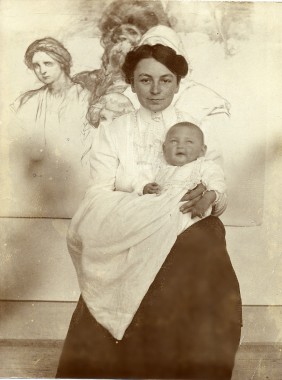










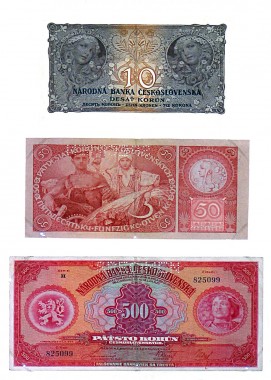
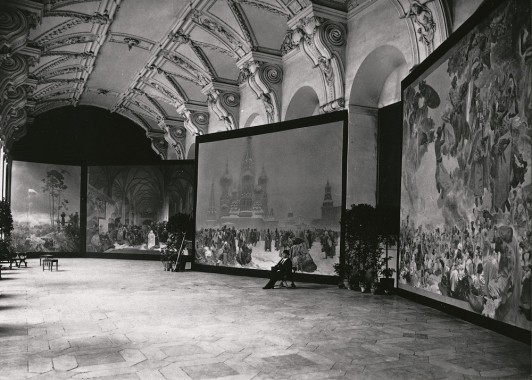
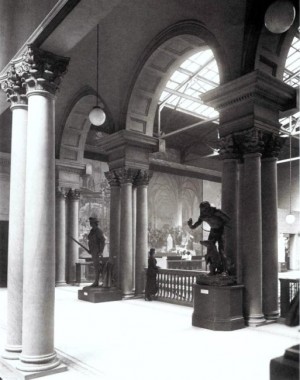





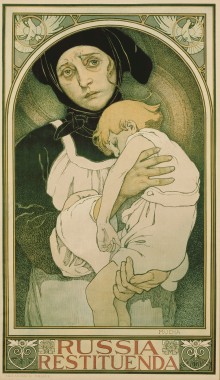




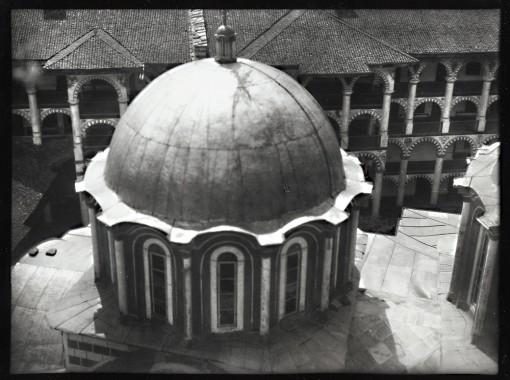





_study_Omlandina.jpg)







_Nice.jpg)
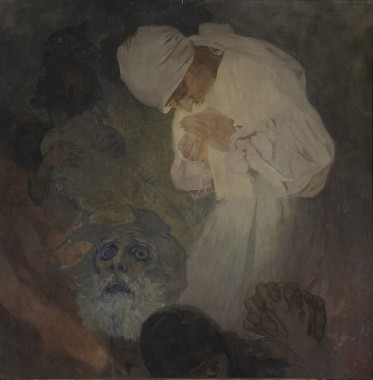

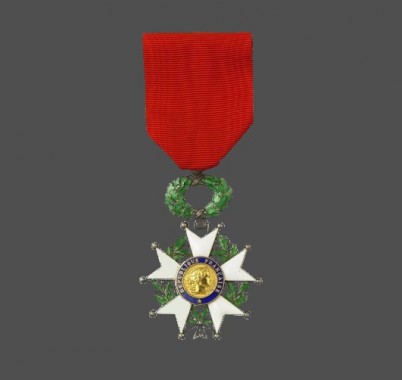


_self-portrait.jpg)






